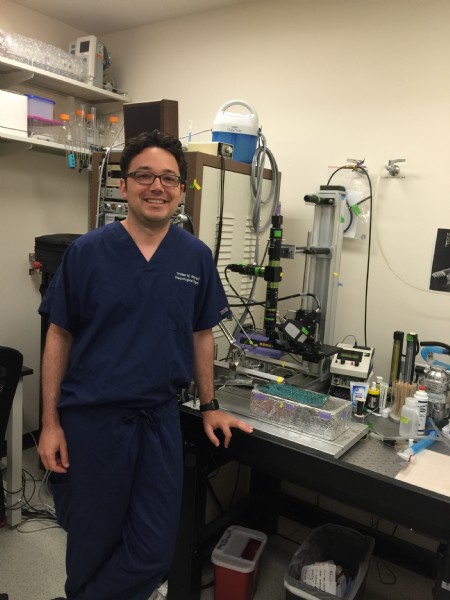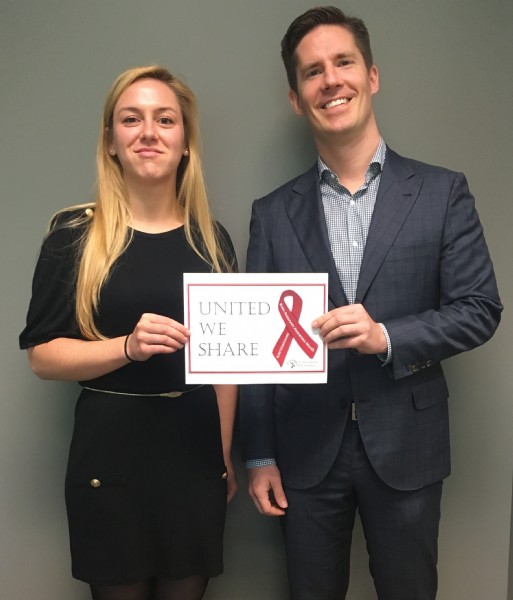 Research Study: An Investigation of Epoxyeicosatrienoic Acids as a Treatment Strategy to Improve Glymphatic Flow, Cerebral Blood Flow and Behavioral Outcomes Following Subarachnoid Hemorrhage in Rats
Research Study: An Investigation of Epoxyeicosatrienoic Acids as a Treatment Strategy to Improve Glymphatic Flow, Cerebral Blood Flow and Behavioral Outcomes Following Subarachnoid Hemorrhage in Rats
Primary Investigator: Tristan Stani, MD, Dept. of Neurological Surgery at Oregon Health and Science University
Background: Aneurysmal subarachnoid hemorrhage (SAH) remains one of the most challenging stroke syndromes facing today's neurological critical care providers and surgeons. Despite advances in characterizing the anatomical details of aneurysms and the continued development of novel surgical and endovascular techniques for securing aneurysms, the delayed consequences of initial aneurysm rupture continues to challenge care providers, We continue to lack a sophisticated understanding of the exact systems that are disrupted following SAH and the mechanisms that underlie their dysfunction. All too often the most technically successful treatment of a ruptured aneurysm is unfortunately marred by the delayed stroke and other cerebral dysfunction for which we have limited treatment options
Research Objective: The central objectives of this project are to determine the effectiveness of augmented levels of epoxyeicosatrienoic acids on rescuing perivascular flow of CSF through the glymphatic system in the setting of subarachnoid hemorrhage and to correlate post-SAH changes in the glymphatic system and subsequent glymphatic flow rescue by epoxyeicosatrienoic acids with post-SAH cerebral blood flow changes and behavioral outcomes.
The “glymphatic system” is a cerebral microcirculation system of cerebral spinal fluid (CSF) that has only recently been described. Initial work on this system has suggested important connections with neurodegenerative diseases such as Alzheimer’s Disease. Importantly, the system has also recently been demonstrated to be disrupted following SAH and then restored after the delivery of tPA, a “clot-busting” drug commonly given in the clinical setting following acute ischemic stroke. This suggests important new treatment strategies for SAH.
Outcomes: With funding from The Aneurysm and AVM Foundation, Dr. Stani will launch a series of MRI imaging experiments which will characterize glymphatic CSF flow pre- and post-SAH. He will then image glymphatic flow pre and post-SAH in an experimental group pretreated with analogs to epoxyeicosatrienoic acids (EETs). EETs are endogenous molecules that the body already makes which possess profound anti-inflammatory, vasodilatory and fibrinolytic effects. He hopes to demonstrate that the fibrinolytic ("clot-busting") effects of EETs analogs will improve glymphatic CSF microcirculation and ultimately improve cerebral blood oxygen delivery and decrease cerebral inflammation following SAH, which will ultimately lead to improved outcomes.
Source: Tristan Stani, MD, Oregon Health and Science University. This research summary has been adapted and edited from Dr. Stani's research proposal.
 Research Study: Quality of Life in Patients Diagnosed with Unruptured Cerebral Aneurysm: Prospective Single-Center Series
Research Study: Quality of Life in Patients Diagnosed with Unruptured Cerebral Aneurysm: Prospective Single-Center Series
Co-Primary Investigators: Peter Gooderham, MD, Clinical Assistant Professor, Division of Neurosurgery, Dept. of Surgery at the University of British Columbia and Charlotte Dandurand, MD, Neurosurgery Resident at the University of British Columbia
Background: In the United States, 6 million people, 2% of the population, are living with an unruptured brain aneurysm. Many of these people are unaware of their diagnosis. The most important and devastating consequence of a brain aneurysm is subarachnoid hemorrhage from aneurysm rupture. Living with the diagnosis of an unruptured cerebral aneurysm can understandably cause anxiety for a patient and the impact on patients' quality of life is not well understood. The degree to which this diagnosis affects patients and how this affect changes over time remains unknown. The impact of microsurgical clipping and endovascular coiling on patients' quality of life is also poorly studied
Research Objective: The objective of this research is to identify how the diagnosis of an unruptured cerebral aneurysm and its subsequent treatment impacts quality of life over time.
Outcomes: With funding from The Aneurysm and AVM Foundation, Dr.'s Gooderham and Dandurand will use objective quality of life tools to interview patients at diagnosis and again one year later. Quality of life will be assessed at diagnosis, at 6-12 weeks post-operative follow-up, and at 1 year post-operative follow-up in patients who have been treated. The latter group will be divided into 2 sub-groups, endovascular and microsurgical (clipping). Patient demographics, size and location of aneurysm, radiological features, presence and degree of neurological deficits, treatment modalities, and postoperative complications will also be collected.
Source: Charlotte Dandurand, MD, University of British Columbia. This research summary has been adapted and edited from Dr.'s Gooderham and Dandurand's research proposal.
